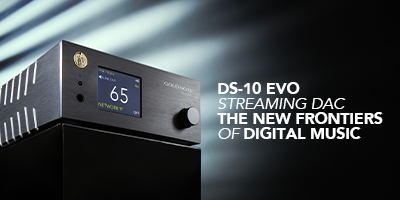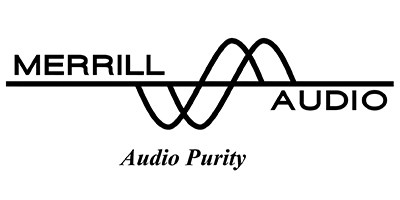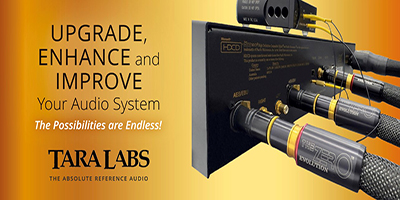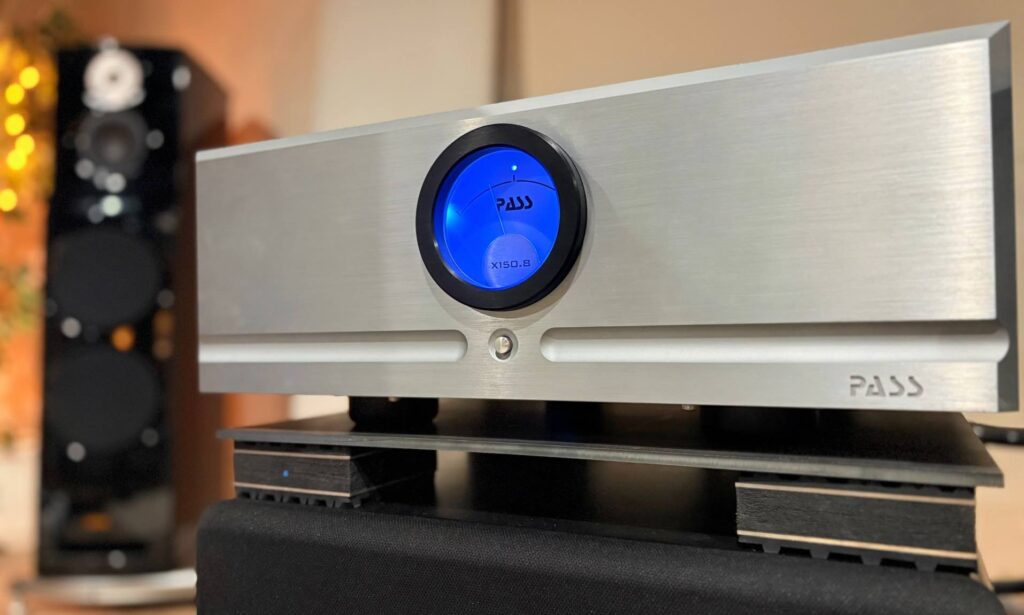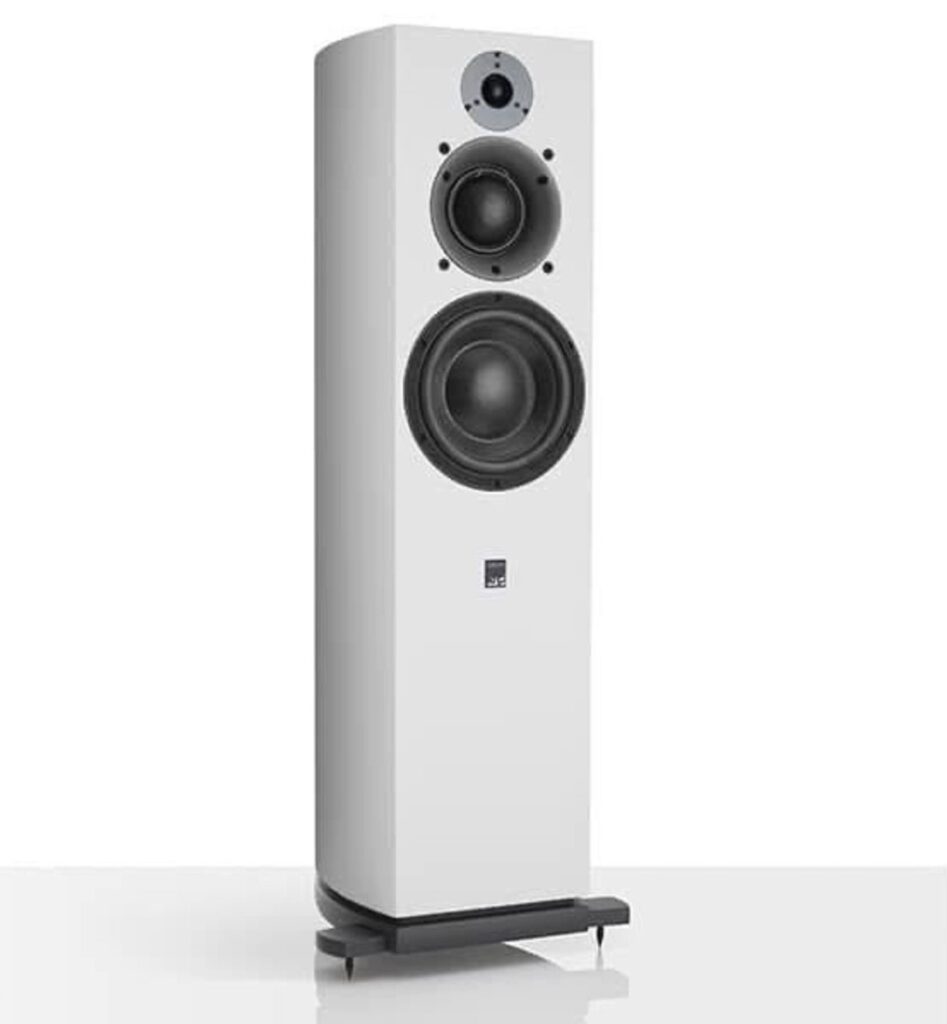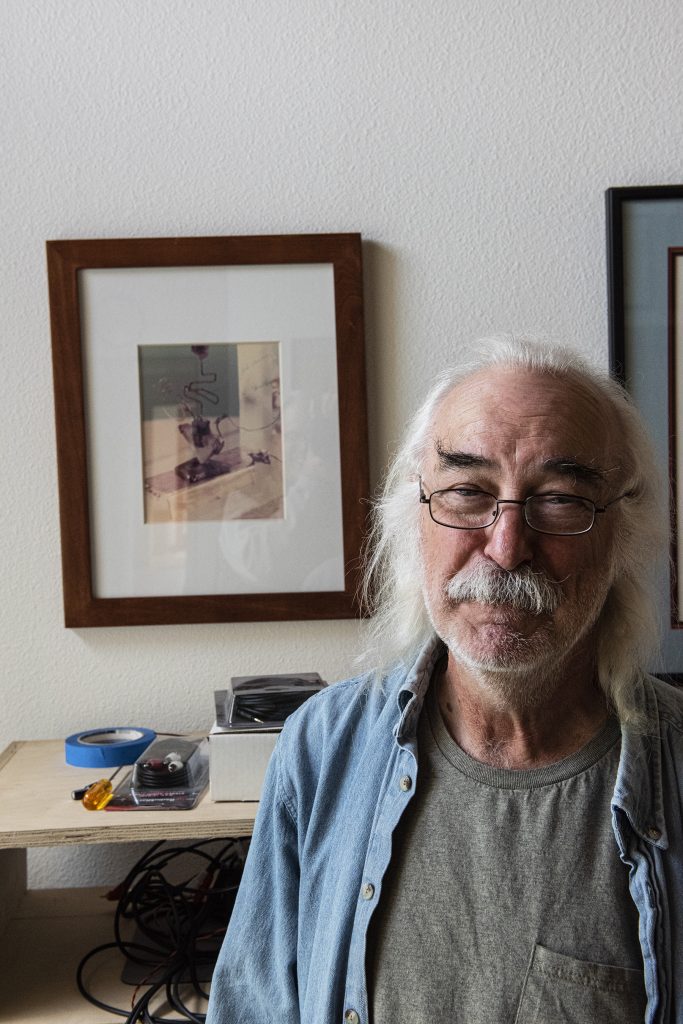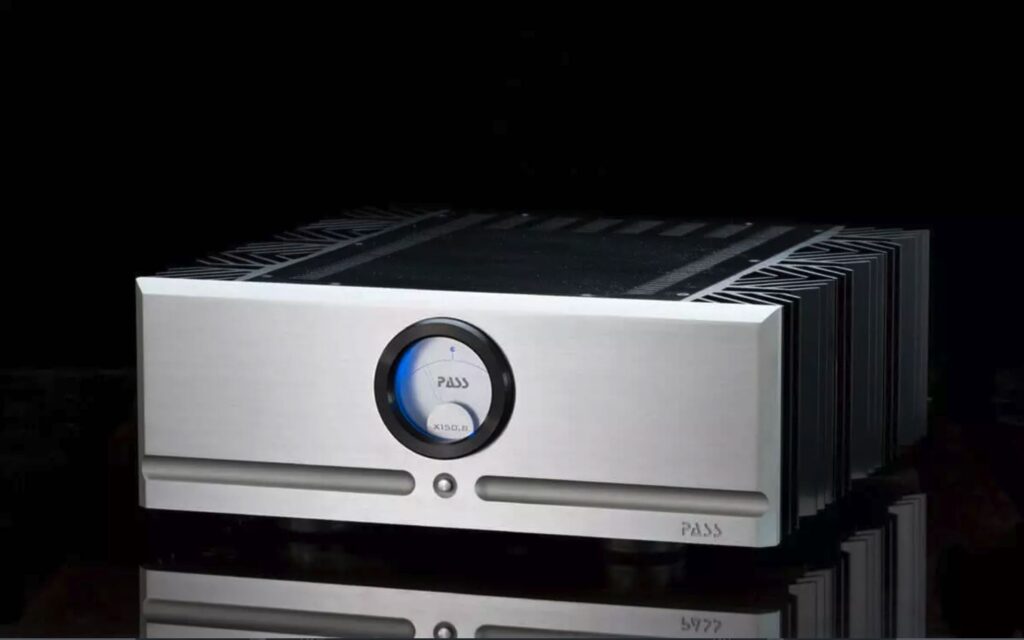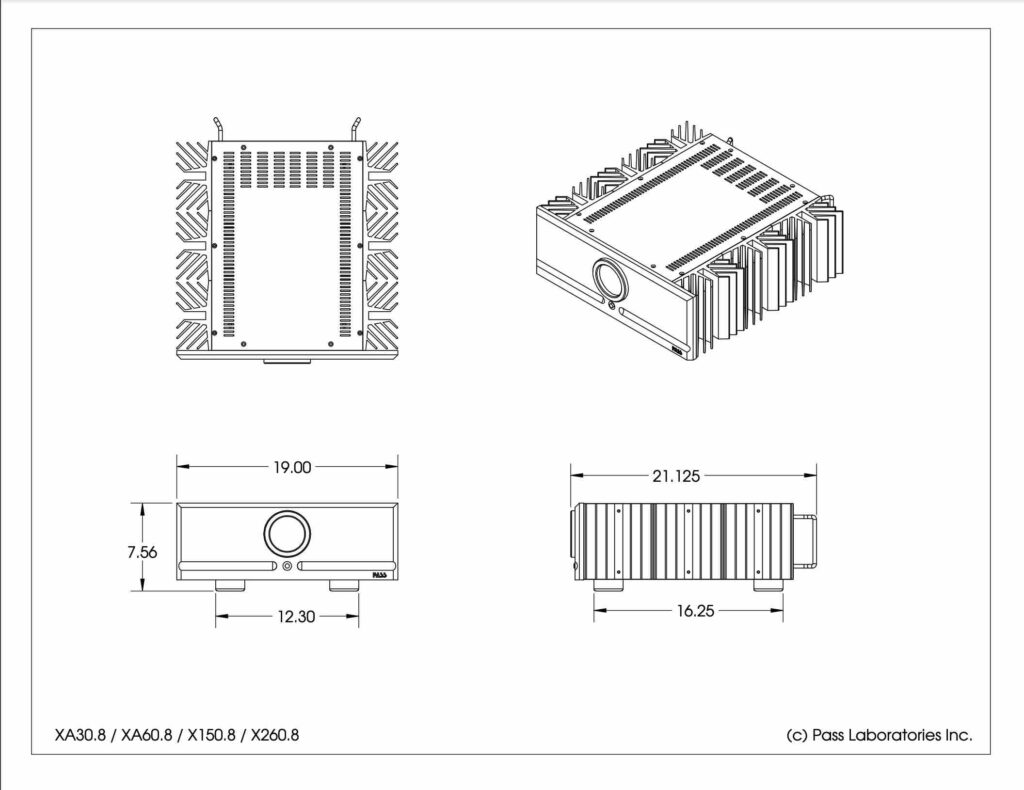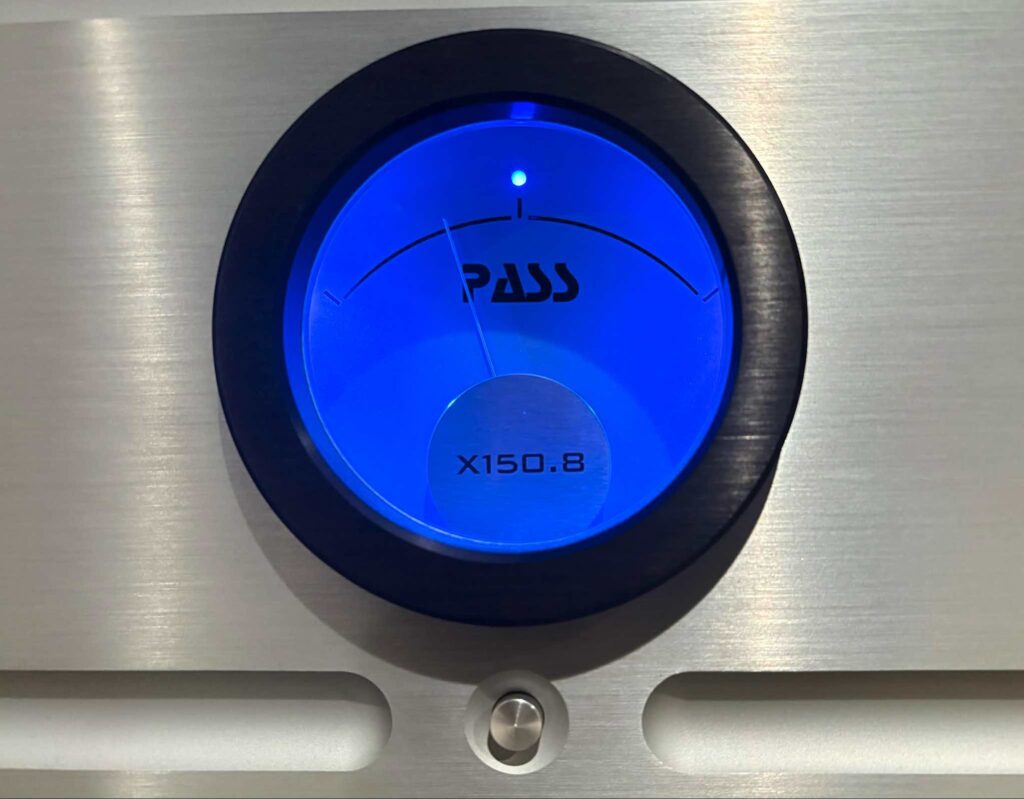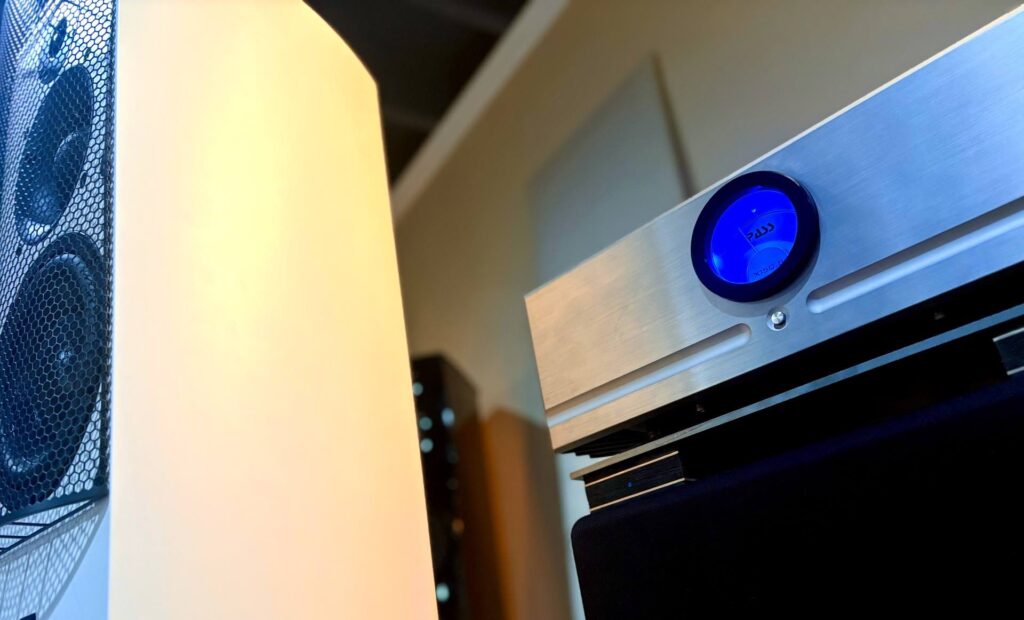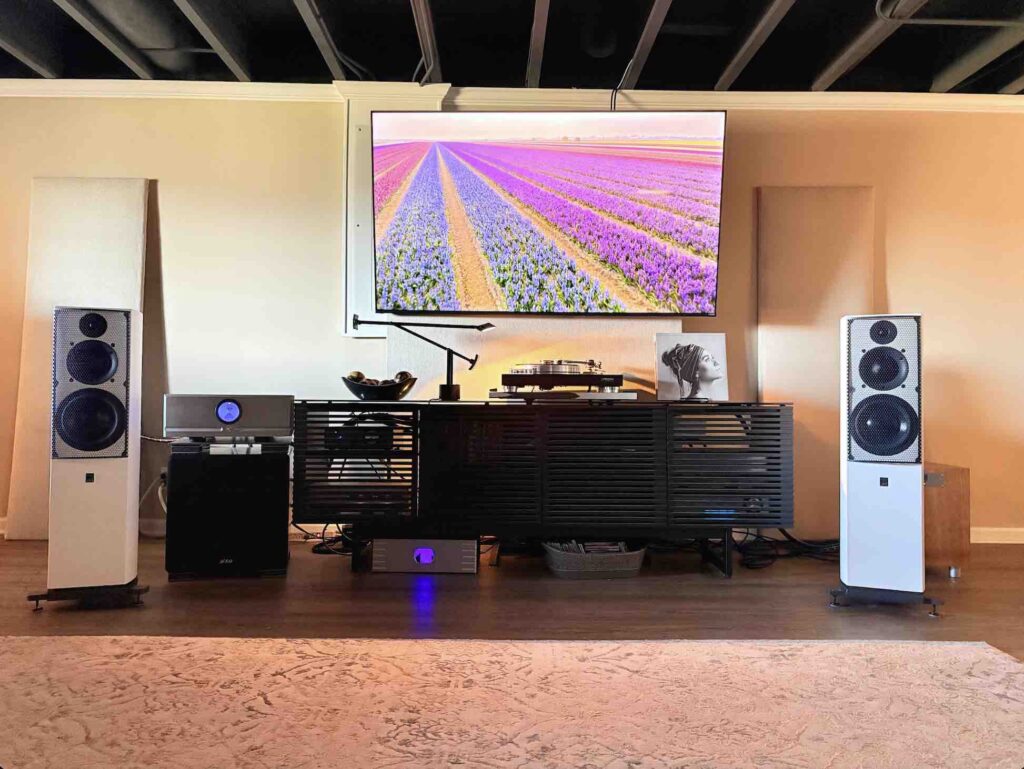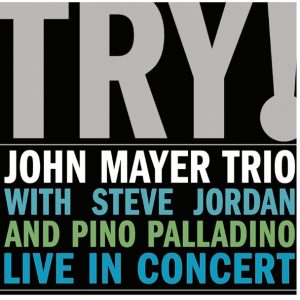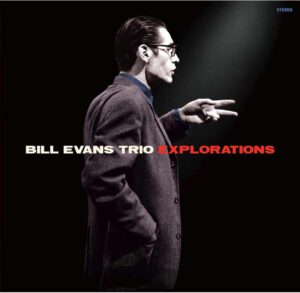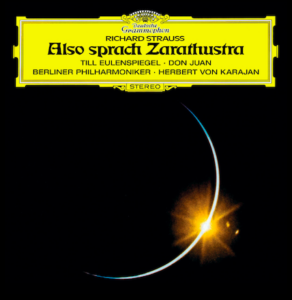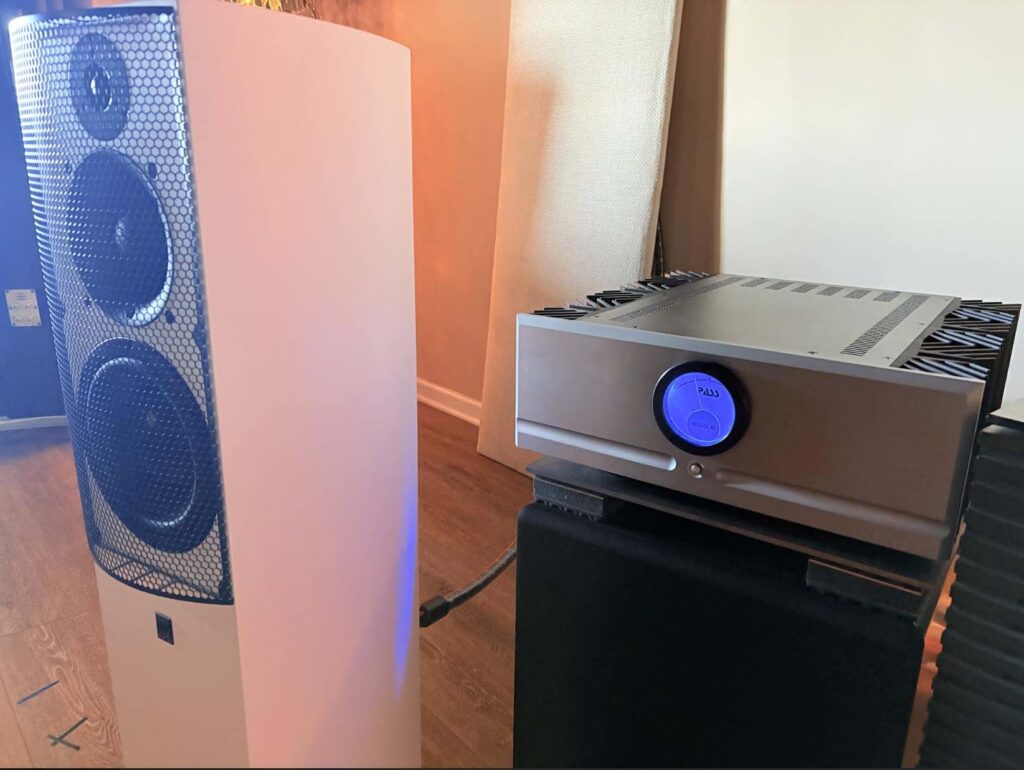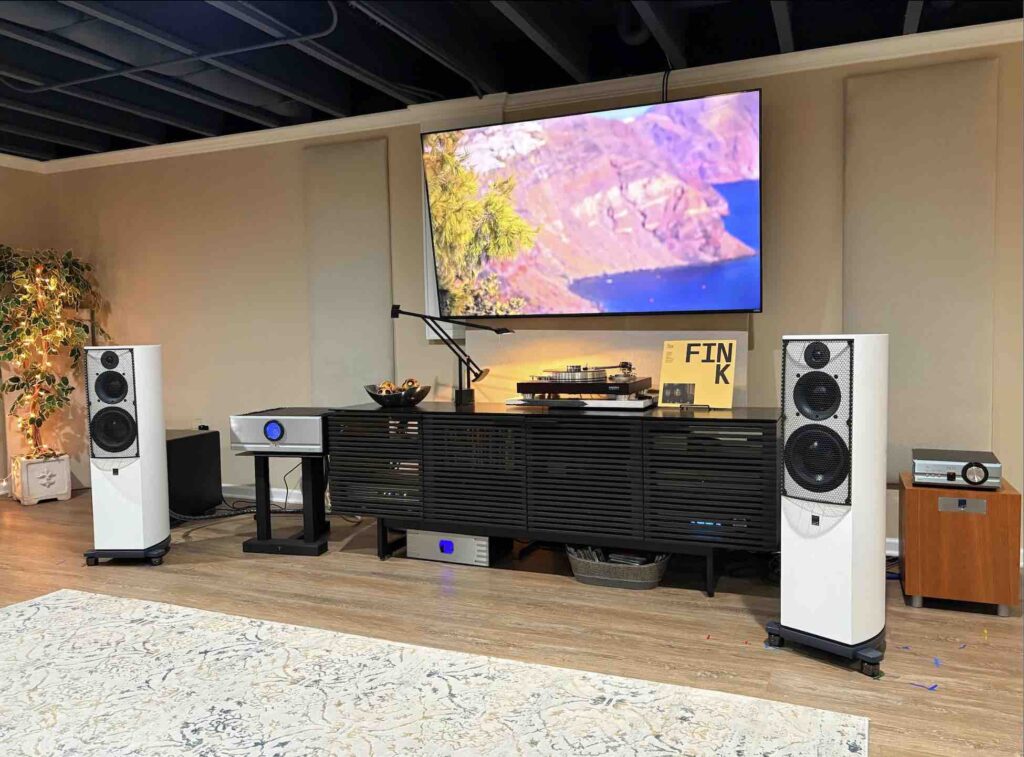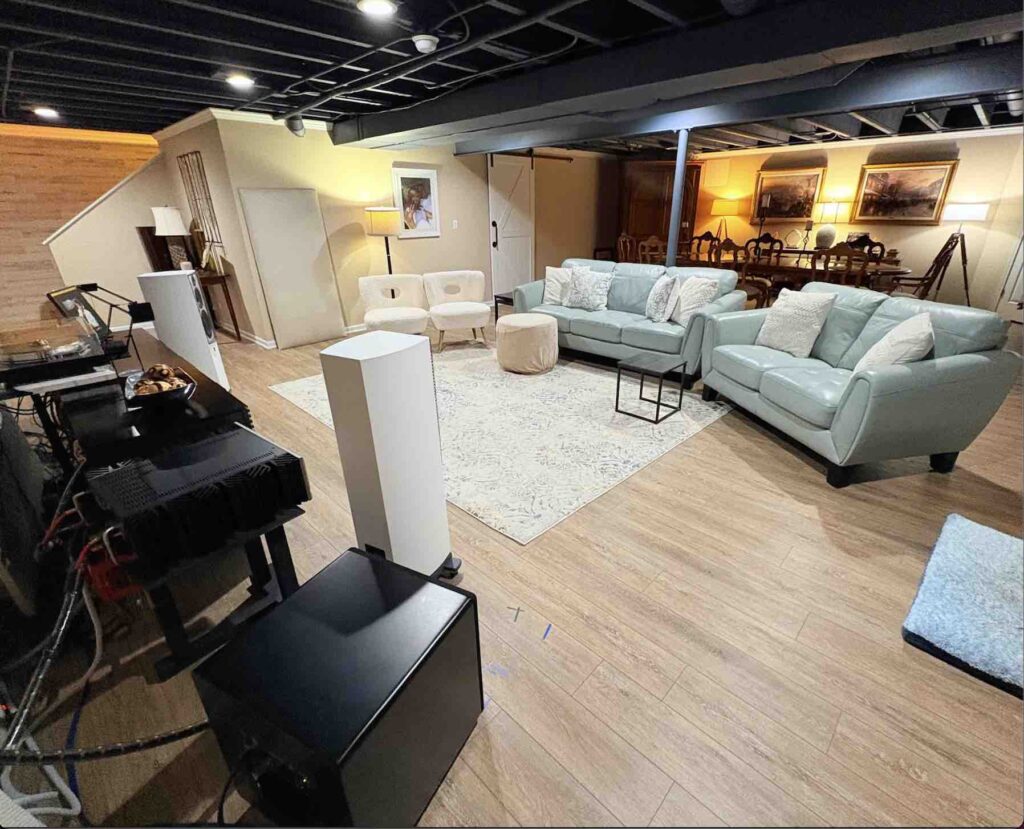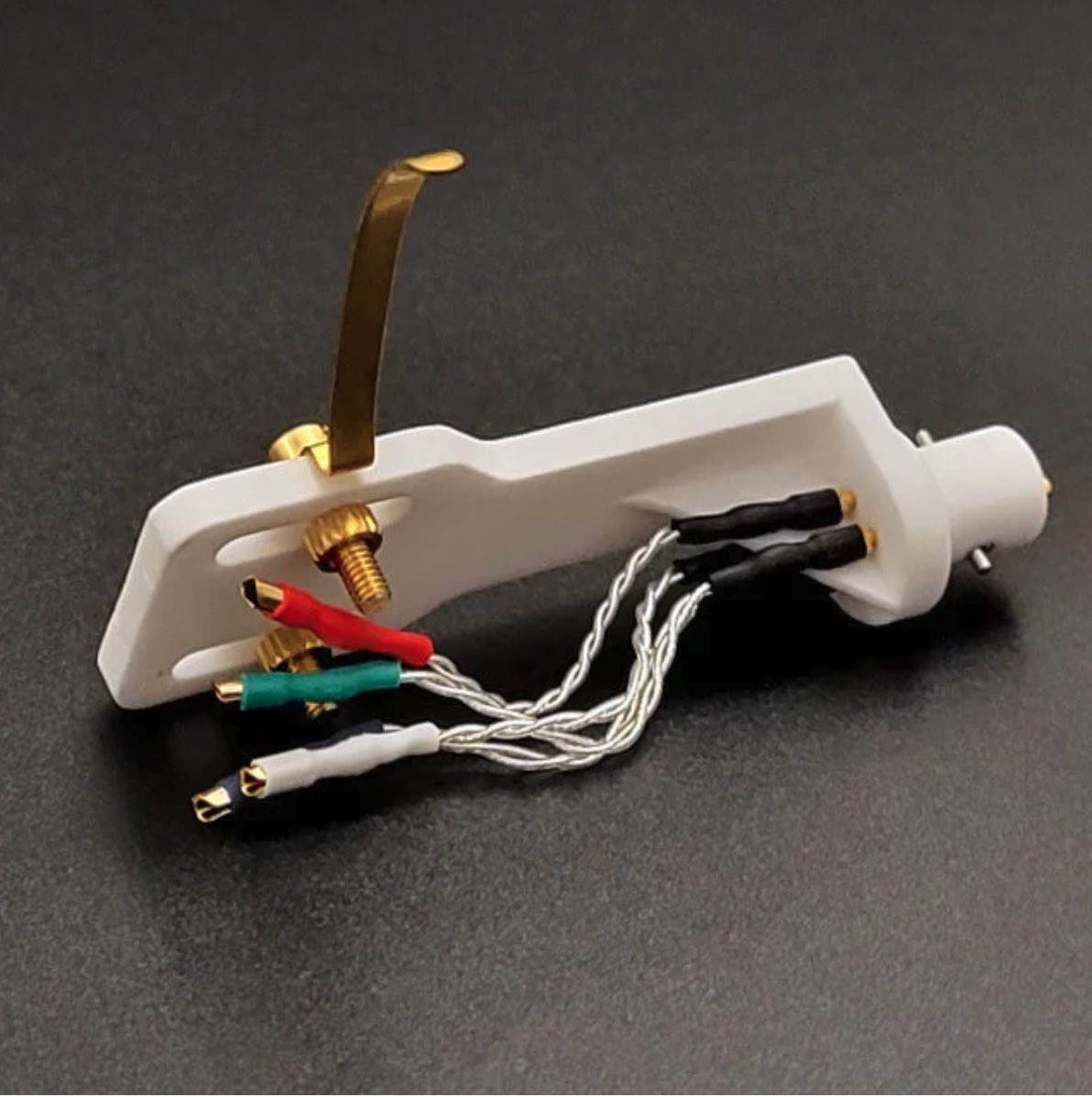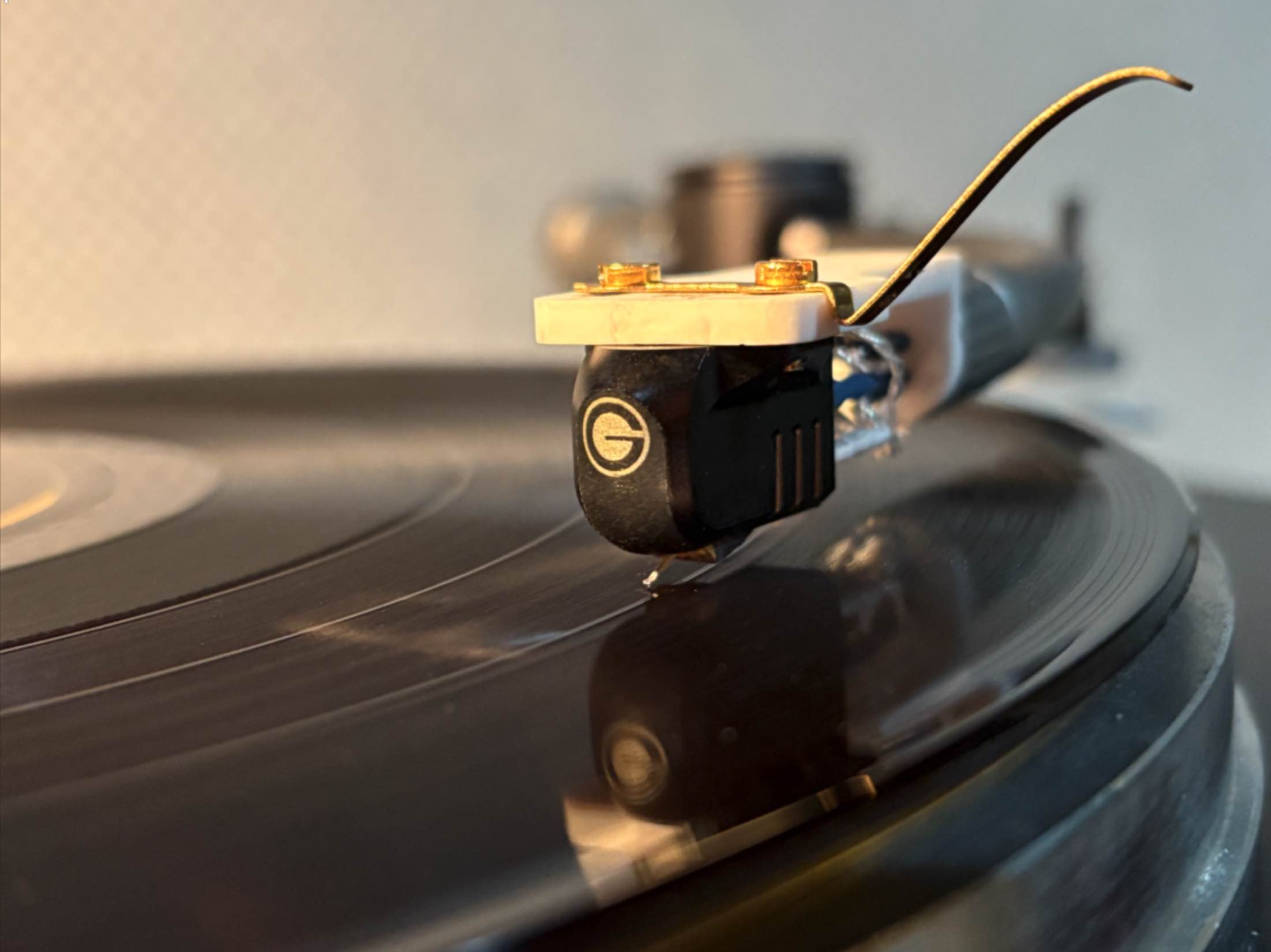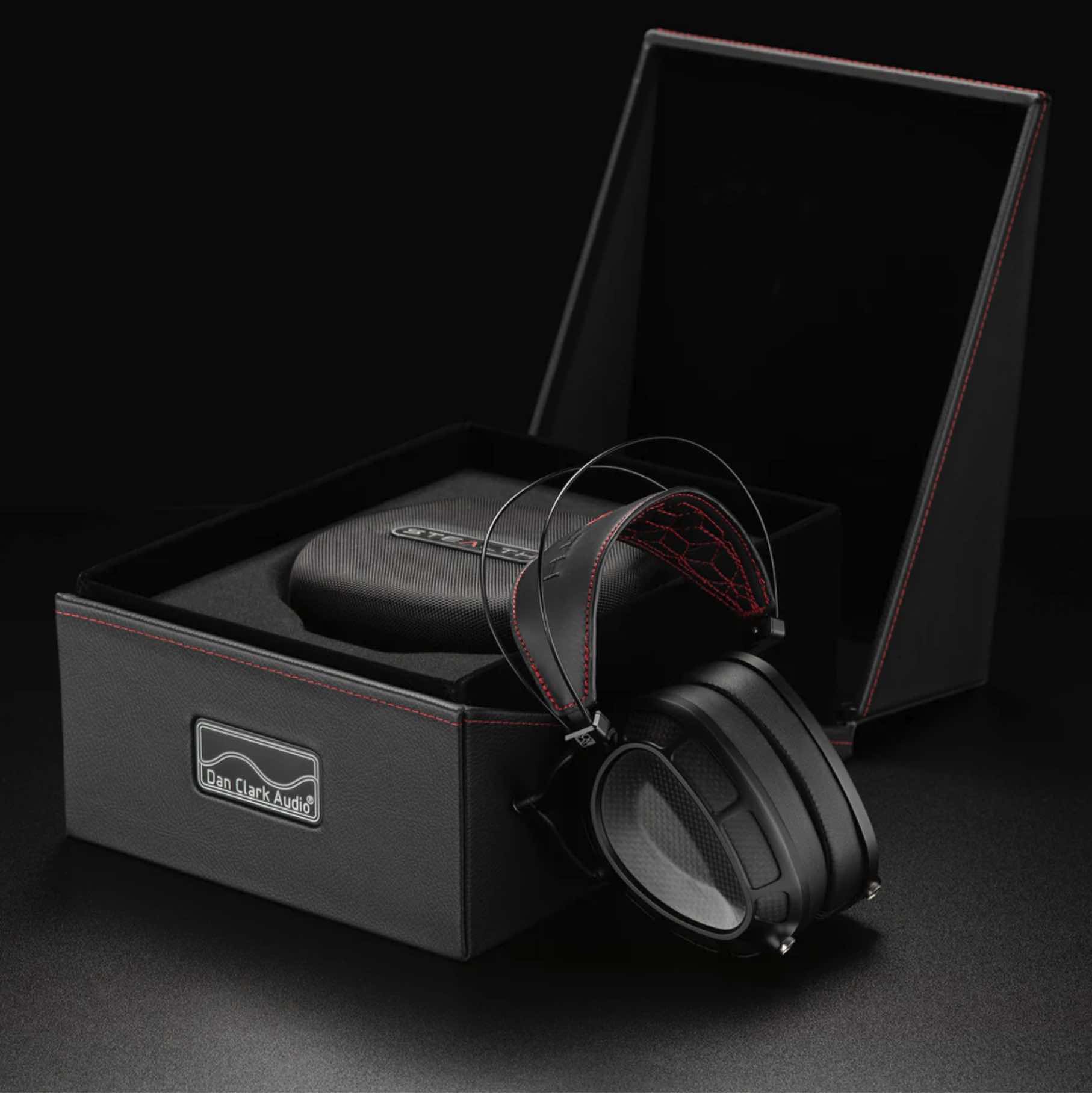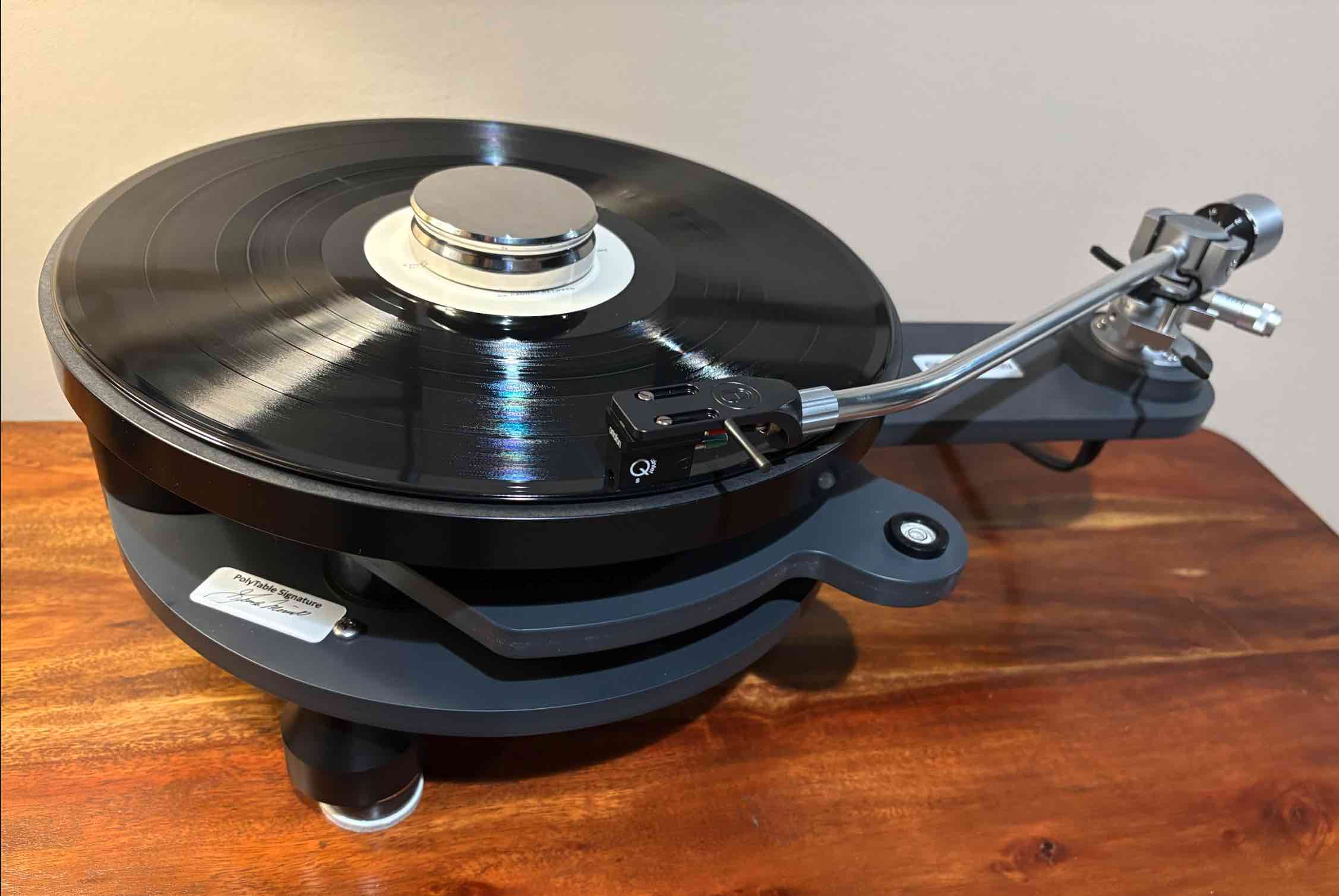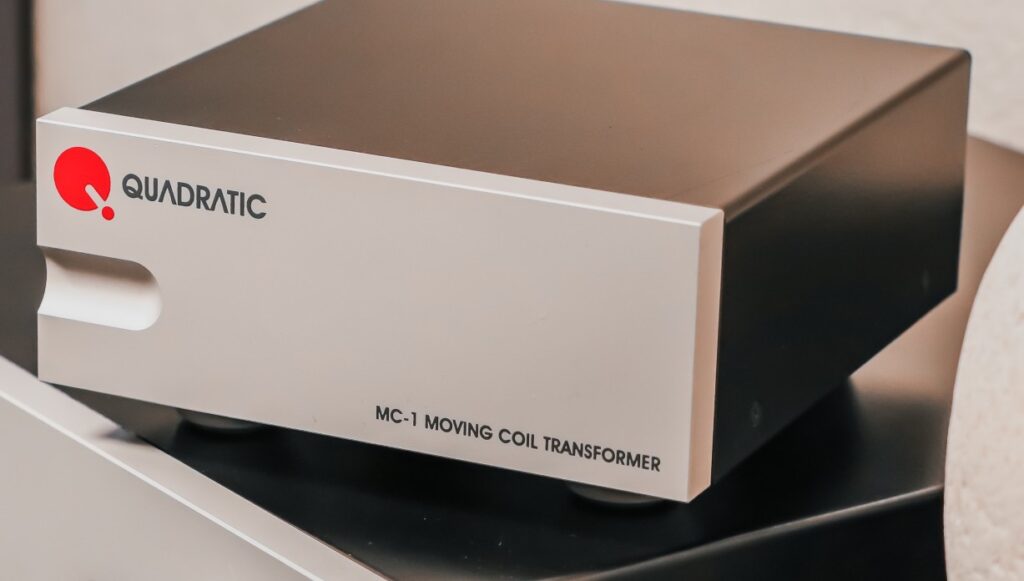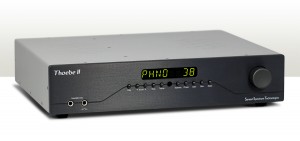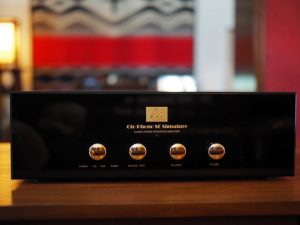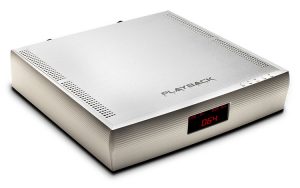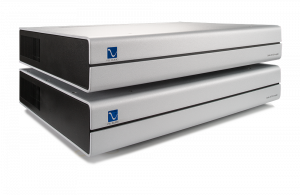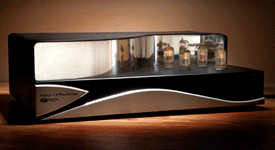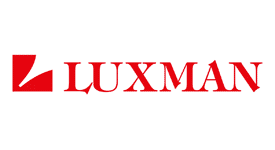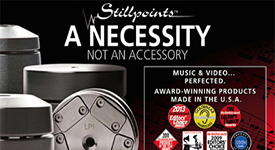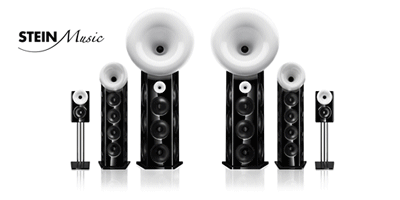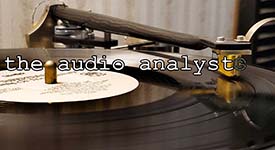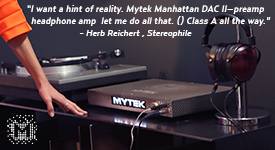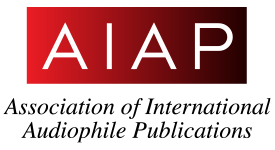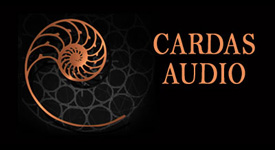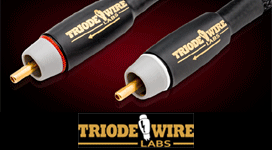The Pass Labs X150.8 Stereo Amplifier, seen up front atop a 1/4" steel plate on A/V RoomService EVP Equipment Vibration Protectors. In the back to the left is one of my reference Usher Audio ML-802 Loudspeakers.
As a longtime Chicagoland resident and audio enthusiast, the Pass Labs X150.8 conjures Scottie Pippen's impact on the 1991-1998 Chicago Bulls basketball dynasty. When casual sports fans reflect on that era, Michael Jordan's name always comes up, front and center. Back then, everybody wanted to "be like Mike," but it wasn't merely the result of the media darling getting the job done in his Air Jordan sneakers. Au contraire!
"One of the most versatile and talented players ever, Scottie Pippen orchestrated the offense like a point guard, rebounded like a power forward, scored like a shooting guard, and defended on the perimeter like few others," wrote the NBA.com staff about one of Jordan's teammates. And yet, for many, he's a forgotten entity, a footnote in sports trivia.
Scotty Pippen in action (photo courtesy of Amazon.com)
It's like when my adult stepchildren gush about "the speakers" when they hear my sound system in action. The reality is that for the last five years, Pass Labs amps have teamed up with Usher loudspeakers and other select components like the Schiit Yggdrasil Analog 2 DAC and my Straightwire cables to deliver stellar performance, just as Scottie (a repeat NBA all-star in his own right), together with Jordan and others like Steve Kerr, Dennis Rodman, and coach Phil Jackson catapulted them to six world championships.
Here's an earlier iteration of my reference system in a former home, with the X250.8 amplifier in for my 2019 review.
No Passing Fancy
My affiliation with Pass Labs began with their X250.8 stereo amplifier in 2019. I wrote about the experience in this review. That started a long-standing relationship that included their XP-12 preamplifier (HERE), XP-17 phonostage (HERE), and HPA-1 headphone amplifier (HERE). The X250.8 was returned following that initial review, and the X150.8 replaced it, remaining a fixture since then on long-term loan. When we downsized, it traveled to our current house (I talk about the ensuing new A/V room construction HERE). When I upgraded my Usher Audio Mini Dancer 2 DMD loudspeakers to their larger Usher ML-802s, the X150.8 stayed on, ensuring a seamless transition to higher performance levels.
The Pass Labs X150.8 has served as a reference amplifier in numerous audio reviews and performed admirably with its combination of power, detail, natural tonal balance, and accuracy compared with other amplifiers. For example, in my review of the Usher R-1.5 amplifier (HERE), I wrote, "The Usher R-1.5 amplifier is an excellent performer, giving the more expensive Pass Labs X150.8 a run for its money; building upon an earlier Nelson Pass design, the R-1.5 delivers the lion's share of the detail, while adding an extra dollop of warmth, midrange and bass boost to the mix for a fraction of the cost...[however] as a reviewer, I rely on the extra bit of detail, resolution, and neutrality afforded by the X150.8 to assess gear I am reviewing properly."
In a review of the McGary SA1 tube amplifier elsewhere, I noted that it "...doesn't deliver the detail through the extended highs as my solid state Pass Labs X150.8 amplifier does. Being a tube amp, that wasn't a surprise. Moreover, the SA1E does not have the grunt or sheer power of the Pass Labs—nor should it. The X150.8 A/B amp is rated at 150 watts per channel into eight ohms and 300 watts into four ohms, and since the Usher ML-802s are four-ohm speakers, the X150.8 has 300 watts on standby to drive them with great authority and oomph!"
In all fairness, I also noted that Pass Labs' staffer, Kent English, said that since the A/B meter on the X150.8 rarely budges–or moves out of the Class A side–it's likely using 13 to 16 watts normally, which makes for a compelling comparison with the SA1E that is rated at a mere 30 watts for a "...rich and compelling presentation packed with plenty of bass and natural, balanced sound." But, in the end, I concluded that "...as much as I would enjoy keeping it around for its luscious charms, it glosses over some precious bits of information that I really want to hear–and that my reference Pass Labs X150.8 delivers–with more transparency and oomph."
It's interesting to note that following the formal review session, Joe, an industry friend, took possession of the McGary amp, swapped out the original tubes, and invited me over for a listen on his system—and an addendum to my review. I took him up on his offer and noted, in part: "By changing your tube selection, you can greatly affect the presentation of this amp, and we felt that with the combination of Sophia 6SN7s with Psvane KT88s, we got our optimal blend of soundstage, clarity throughout the sound spectrum, and bass-mids-highs balance. However, that's a subjective thing; you might prefer a warmer, richer presentation that was exemplified by the original package."
Photo courtesy of Gibson's Steakhouse
When I grill steaks on the Weber, my wife likes hers medium rare with HP Sauce, while I prefer mine bloodier with a touch of coarse rock salt. When I run an amp in my system, I favor mine more straight up and solid state than glazed and sauced with the additional warmth of vacuum tubes that Joe likes. It's a matter of taste.
The X150.8 Drives the ATC SCM40 Loudspeaker Just Fine
I am currently reviewing a pair of ATC SCM40 loudspeakers featuring their legendary SM75-150 3" soft dome midrange driver renowned for accuracy and clarity. Before they arrived, I spoke with a salesman at Saturday Audio Exchange, a Chicago home audio store that sells them, and was told that to shine, they need an amp with a strong current, and the Pass Labs X150.8 should do just fine. He was correct. The X150.8 gives them full expression as they run in, loosening up the moving parts—in particular, their proprietary SH25-76 dual suspension 25 mm soft dome tweeter that, unlike many other high-frequency drivers, does not use ferrofluid and takes longer to break in—and allow them to move unencumbered through a full range of motion. The partnership of Pass Labs and ATC is going marvelously so far, serving up a vivid soundstage packed with plenty of power, nuance, and detail!
Nelson Pass (photo by David Robinson)
The Legendary Lineage of Pass Labs
The Pass Labs X150.8 is the latest in a line of brainchildren from the highly esteemed designer Nelson Pass. A Physics graduate from UC-Davis in 1974, he designed crossovers and speaker enclosures for ESS Speakers while a student and, after graduation, co-founded Threshold Audio with industrial designer Rene Besne, where he gained renown for their Threshold Stasis amplifier.
Nelson also gained wide acclaim for his Adcom GFA 555 amplifier design. (You can read my email interview with him under the "A Conversation with a Legend" section HERE.)
While at Threshold, he met and hired Joe Sammut, who eventually became a business partner; he would move on to the presidency at Krell and, eventually, Pass Labs.
Nelson also hired Wayne Colburn, a future partner at Pass Labs, as the "Wizard's assistant" at Threshold in 1989.
Home Cooking at the Pass
Official Pass Labs operations commenced in 1991 at Nelson Pass's home (he and Mike Burley created a machine shop in Nelson's garage with three CNC machines they'd built to produce the amps), where he gained notoriety with his single-ended Aleph. The first version, the Aleph 0, was a monoblock rated 70 watts into 8 ohms and, according to passlabs.com, "was unique in using three gain stages of power Mosfets, including a push-pull output stage biased by a big constant current source. The amplifier operated as single-ended Class A up to its 70-watt rating, and in push pull Class A at higher wattage."
A Little Passing Knowledge
About this time, Pass hired his next-door neighbor, Elena Tong, to help with production (she went on to help manage the company until she retired a couple of years ago). They created a stereo Aleph and a preamp, the Aleph P.
Then, in 1994, Wayne Colburn rejoined Nelson. At Pass Labs, he improved the Aleph P line stage, giving it a new active volume control circuit and remote control, created a new phono stage, and, in the process, Nelson Pass received two patents, with one of them the design of the Super Symmetric circuit that's still used today. He also created their D1 DAC, which is still highly regarded nowadays but focuses primarily on preamps.
In 1995, Joe Sammut left Krell to become the head of operations at Pass Labs, and in 1996, designer Desmond Harrington, also from Krell, followed suit. Sammut would become President of Pass Labs, allowing Nelson to focus all his time on product development.
Following subsequent iterations of the Aleph, Pass introduced their newly patented Super Symmetry topology with the X1000 amplifier in 1998, achieving 1000 watts with high performance, local feedback, and only two gain stages: a cascaded differential pair of transistors and a large bank of complementary output followers. This ground-breaking design has formed the amplifier products from Pass Labs to the present day.
The first XA amps combining the X and Aleph topologies arrived in 2002 via their XA200 (200-watts mono) and XA160 (160-watts). In 2003, they introduced the X150.5, a major improvement to the X150. Other .5 versions of X amplifiers followed suit through 2005. In 2007, the ".5" revisions were applied to their XA amp series, including the XA100.5, XA60.5, and XA30.5.
"Pass Labs products remain in the line up 9 to 10 years," Bryan Stanton, the late longtime publicist for Pass Labs, wrote via email in 2019. "Wayne Colburn once modestly mentioned something to me over dinner: Being in the line that long, imagine how difficult it is to design a preamplifier, phono preamplifier, or amp so that its performance is 'Top Dog' in a very competitive field for that length of time!
"So an X > X.5 > X.8, or an XP-10 > XP-12 progression requires significant research, deciding what factors can still be further improved, search and selection of the next generation of high-performance parts to achieve the desired results—not to mention figuring out how to implement them, as well as making them 'play together nicely.' Even with the ever-modest Wayne explaining the process, the mind boggles how prescient he and Nelson have to be! "
Now based out of larger facilities in Auburn, CA, and since releasing the X.5 series, they developed their latest round of major improvements, the X.8 amplifiers.
In 2007, Desmond Harrington took over presidential duties at Pass Labs while Nelson and Wayne continued working on product development.
Anastasia Protopappas, President of Pass Labs, in a Google Meet interview with me in 2023.
A Family Affair
Then, in January 2022, Anastasia Protopappas, the stepdaughter of Joe Sammut, became president of Pass Labs (Mr. Sammut passed, but her mother, Barbara Sammut, is one of the partners in Pass Labs). A graduate of UC Davis Graduate School of Management, Ms. Protopappas served as the Finance and HR Leader at Pass Labs and, before that, was senior finance manager at Oracle and a senior financial analyst at Hewlett-Packard.
"More than any other company I've worked with, and probably a lot of companies I've dealt with, we take really good care of our customers, and that is always Number One," she said in an August 2023 interview with me. "And we're always willing to do whatever we can to make sure that our customers are happy. We still repair products that are 20 and 30 years old now, and people still love them! And we are more than happy to do whatever we can to keep those products selling. If we ever have warranty issues, we're always happy to take care of those as quickly and as painlessly as possible for customers.
"That is something that Nelson has really made sure that this company does. You know, when it comes to repairing old products that are out of warranty, we're not making money on those; we're just kind of covering costs and making sure that we can keep doing that," she said. "It's not a profit center, you know what I mean? We just want to make sure that people keep loving their Pass products. I think that's always been the main, repeated mantra here." (You can read more of my interview with Anastasia Protopappas HERE.)
"What brought me to Pass Laboratories was the unique corporate culture that Nelson created after Threshold. Nelson's vision was a company that was more community than corporate," wrote Kent English. "Nelson has always stressed that he strives to be more like himself every day and likewise with the company. Anastasia has done much to continue and expand that vision. It's all about community: the staff, our trading partners, and our end users."
Weighing in at 88 pounds, it boasts a thick brushed aluminum billet faceplate with a large, blue-lit A/B meter at the center, a standby button below flanked by its signature CNC routered troughs on both sides, and the engraved name, PASS, at the bottom right. Large heat sinks adorn both sides of its 19" x 21.5" x 7.5" chassis.
Photo courtesy of Pass Labs
Drawing courtesy of Pass Labs
The top of the chassis is slotted for ventilation, and the rear boasts two beefy handles for lifting, balanced XLR and unbalanced RCA inputs, the master power switch, the input for an IEC power cord, a screw-in ground connection, and speaker binding posts with large and comfortable, ergonomic curved wing nuts that lock in speaker cable spades or banana connectors securely. It has four large rubber feet underneath.
Photo courtesy of Pass Labs
When operating, the X150.8 gets warm but not so hot to make it unpleasant to the touch. However, it demands space around it (at least six inches all around, according to its manual) and should never be placed in an enclosure.
The Meter, Bias, and a Little Technical Talk about Class A and B
"The meter is driven by an independent circuit that reflects the bias current through the output stage," the Owner's Manual reads, adding that when the wand reads "full scale," it's at or near maximal output. Normally resting at about the 10 o'clock position, when it goes past 12 o'clock, it leaves Class A and goes into Class B mode. (The big advantage of Class A is that the signal output will always be an exact reproduction of the input signal, thus reducing distortion (www.electronics-tutorials.ws).
Nelson Pass talks about the technical aspects and characteristics of operating in Class A and B modes in his article entitled "Leaving Class A." "The meters on our amplifiers are different," he writes. "They reflect the current consumption of the amplifier, and when the amplifier is operating, they don't go down to zero like the meters on other amplifiers. This is because the electrical current consumption of our circuits has a fairly high value at all times, a property called the bias. The bias current runs through the amplifiers at a minimum value, determining the class of operation– Class B, Class AB, or Class A.
"The benefits of high bias current extend beyond simple harmonic distortion measurements—you also get a reduction of intermodulation distortion (arguably more important) and a lower, more consistent output impedance," he continues. "As a corollary benefit, the heavy hardware required to support Class A operation will show better thermal stability and will deliver better performance into difficult loads.
"So what's the downside of high bias operation? In two words: Low Efficiency."
The point of going to all this trouble is to build an amplifier that sounds as good as possible, he asserts. "We find that this is achieved by building a simple amplifier which is intrinsically distortion-free. Getting that depends on a high bias."
As a corollary, he adds, "Measurements are helpful at illustrating the differences between design approaches, but they are certainly not the last word in audio. If they were, then numerous other approaches would sound as good or better. You can certainly imagine an amplifier which operates with a low bias current but has the necessary amount of negative feedback and/or circuit complexity to ensure that it measures as well. Actually, you don't have to imagine it—such amplifiers are for sale. Do they sound better? We don't think so. Our meters don't go to zero." (www.passlabs.com)
A Word on Specs
The X150.8 is rated at 26 dB gain, boasting 150 watts into eight Ohms and 300 watts into four Ohms. It has an input impedance of 50k Ohms for single-ended and 100k Ohms for balanced, a damping factor of 150, and a slew rate of 50 v/uS. The manual also adds, "The input capacitance is just a few picofarads, so anything will drive it." (Click HERE for more specs).
The Inbound Pass
That's all fine and good, but how does the Pass Labs X150.8 amplifier play in my home court? The short answer is basically like it owns the place—but in a nice way. Whatever you throw at it, the X150.8 handles in an honest, clear, balanced, and firm manner. It's not a strident-sounding amplifier. Like the X250.8 amplifier I previously reviewed, it is voiced to have a slightly warm sound a few ticks north of neutral. It doesn't add "sparkle," gloss, or heightened detail, and it won't compensate for bad source material, either. If a recording has sharp edges, then it will present it likewise. It tells the truth, imaging accurately with a more natural and organic balance. As mentioned earlier, its clarity aids my evaluation efforts with my review subjects.
For example, when I'm listening to the ATC SCM40 loudspeakers, the differences between them and my ported Usher ML-802 loudspeakers are readily apparent. Whereas the much larger Ushers dig deeper, need less subwoofer bass support, and have more extended and sparkly highs, the sealed cabinet ATCs have a slightly meatier and more articulated midrange, upper- and mid-bass; horns and a drum's attack are slightly truer and more natural sounding. Both loudspeakers sound amazing, however, with the X150.8 amp in play, it's easier to discern the subtle differences.
A Few Words on Specs
The X150.8 is rated at 26 dB gain, boasting 150-watts into eight Ohms and 300 watts into four Ohms. It has an input impedance of 50k Ohms for single-ended and 100k Ohms for balanced, a damping factor of 150, and a slew rate of 50 v/uS. The manual also adds, "The input capacitance is just a few picofarads, so anything will drive it." (click HERE for more specs).
However, the numbers tell only a part of the story. Nelson Pass puts it this way in the Owner's Manual:
For many years, there has been considerable faith that if we simply keep improving the measurements of components such as amplifiers, then they will sound better. Initially, this was truly the case – equipment was sufficiently flawed from an objective standpoint that better measurements matched up with subjective experience. At some level of objective quality, there started to be a disconnect, and some audiophiles began to lose the faith. One of the responses to this was to examine more exotic sources of distortion in the equipment, while some others simply worked to continue to reduce the flaws that were already understood. There's no doubt that some real progress resulted from these efforts, and now you can purchase products at reasonable prices that measure far better than the old stuff. But, the disconnect between the customer's perceptions and the measurements persists, and there have been cases of state-of-the-art engineering resulting in economic failure, apparently because people didn't care for the sound.
Later, Pass concludes:
In the end, even if we can design around the perceptions of a small qualified listening panel, we are still inevitably aiming at a minority audience in the real world. That's OK with me – One percent of this market is still a lot of amplifiers. The thing is, I don't think the audiophile wants technical perfection. He wants to be happy.
The Formal Tryout
True to form, the Pass Labs X150.8 has provided plenty of happy listening and A/V support, as well as an effective conduit for audio equipment evaluation. However, it's been several years now, and it's time for a formal evaluation of its own. Employing the ATC SCM40 loudspeakers and the ATC C1 Sub Mk2 for review, in tandem with my Hsu Research ULS-15 Mk2 subwoofer, I cue up a record on my Micro Seiki BL-91 turntable and kick off this momentous occasion (you can see the complete list of associated gear by clicking on my byline at the beginning of the article).
Grammy Award-winning Lauren Daigle's close-miked mezzo-soprano vocals are intimate, emotive, and powerful as she kicks off the listening session. Rich in timbre and warm in tone, she opens in her gravelly lower register, "You are not hidden/There's never been a moment/You were forgotten," later rising to a powerful declaration as she belts out, "I will send out an army/To find you in the middle of the darkest/Night—It's true/I will rescue you," in "Rescue," (Lauren Daigle. Look Up Child. 45 RPM, 180 gram LP. Centricity Music—9619175721, December 2018.)
"The writing room is where all the emotion can fall out," she said later in an interview. "In 'Rescue,' we used the demo take—which was supposed to be temporary—as the final vocal on the record. This is why I like writing with my producer because when we're writing, he'll just give me an SM7 [microphone], and I'll be singing into it while we write, and sometimes that is how to get a vocal performance that just sounds so alive!" (www.air1.com)
Daigle's signature use of dynamics, alternating between "soft, delicate phrases and powerful, belted notes to create a dramatic effect," is on full display. (Singingcarrots.com) The Pass Labs X150.8 renders that with power and finesse, from the tender opening moments with the piano's slow and stately sustained notes of |Cb / |Gb / |Db / |Ebm (E-flat minor chord) with delicious decay, on up through her sting accompanied crescendos, enveloping the room in a vivid, richly layered, and wide soundstage—triumphantly and in glorious Class A!
A cheering crowd at the House of Blues in Chicago gives way to Steve Jordan's percussive strikes on his tightly drawn snare in the opening moments of John Mayer's Trio playing "I Got a Woman." (Try! Qobuz FLAC 44.1kHz 16-bit, Columbia Records, November 22, 2005). Playing over the ATC SCM40s, Steve Jordan's snare, toms, kick drum, and hi-hat sound real and present, thumping me in the chest and sending our Goldendoodle, Liam, scurrying to quieter quarters upstairs (he'd been lounging in the room until now). Mayer announces, "Steve Jordan, ladies and gentlemen!" The crowd cheers. Pino Palladino's deep electric bass line, which joins in full and deep, is thick, three-dimensional, and more substantive than I've heard it before. It's followed by John Mayer's growling 2005 Fender Stratocaster, the bass weaving underneath in a dance, and with Mayer's falsetto lyrics, "She did me wrong…", the line between live performance and playback becomes blurred. The punch and the sense of scale are immense. The X150.8 renders the ATC SCM40s, with the subs dialed-in, crossed over at roughly 59Hz, into a virtual time machine, transporting you to that historic performance. It's extremely vivid, creating the illusion that the band is playing just beyond the front wall of my family room. Maybe I should hang a sign out front with a cover charge and two drinks minimum for Juan's Underground Wonder Bar North?
The deft and varied impact of felt-covered hammers striking strings, sometimes sprite and percussive, others deeper resounding, and yet others lighter and softer in tone, are realistically conveyed in Bill Evans's masterful piano playing in "Haunted Heart" (Bill Evans Trio. Explorations. 33 /13 RPM. 180-gram LP. Riverside RLP-9351, recorded on February 2, 1961). They have appropriate weight, while the sizzle and rattle of the HiHat, the brushed snare and cymbals of Paul Motian's drum kit, and Scott Lafaro's steady quarter note walking bass line, followed by his sublime solo sound richly resonant and real. Then, there's Motian's impactful snare, toms, kick drum, HiHat, and cymbals playing on the right channel. Wow! It's crisp, imaging again behind the front wall, and flawless as rendered by the X150.8.
A meandering rumbling hum of church organ, contrabassoon, and double basses builds, with horns, then strings slowly joining them near the minute mark in "Of Science and Learning" (Berlin Philharmonic Orchestra/Herbert von Karajan. Strauss: Also sprach Zarathustra (Thus Spoke Zoroaster). Qobuz FLAC 96kHz, 24-Bit, Deutsche Gramophone (DG), 1995). A pensive English horn solos against this backdrop and fades into a rising swell of strings that envelop the room in the rich layers of the orchestra.
It's interesting to note that "Of Science and Learning" features an unusual fugue starting at measure 201 in the double-basses and cellos, consisting of "all twelve notes of the chromatic scale. Measure 223 contains one of the few sections in the orchestral literature where the basses must play a contra B (the lowest B on a piano), which is only possible on a 5-string bass or (less frequently) on a 4-string bass with a low-B extension." (Richard Strauss – Tone-Poem, Death and Transfiguration, Opus 24" Archived 2008-04-15 at the Wayback Machine) When the full orchestra crescendos, strings, horns, and all, it's breathtaking and visceral. Who needs orchestra hall seats when you can experience this from the convenience of your couch?
I have the chills. With the Pass Labs X150.8 holding court in this configuration, I am floored by its dynamics, detail, and delivery of this sublime orchestral experience.
The Pass Labs X150.8 rests upon a 1/4" steel plate on A/V RoomService EVP Equipment Vibration Protectors, resting atop a Hsu Research ULS-15 Mk2 subwoofer (which Nelson Pass said is fine), while StraightWire Crescendo 3 speaker cables feed signal into the ATC SCM40 loudspeakers to the left.
Concluding Thoughts
There's a reason that so many have such high regard for Pass Labs products, and despite the X150.8 having the status as the entry-level class A/B stereo power .8 amplifier, it's a stellar performer and continues to power my two-channel listening and reviewing experience to new levels of elation and satisfaction. For its timeless design and ability to consistently drive loudspeakers like the ATC SCM40s (which, ironically, is the largest loudspeaker in ATC's Entry Series), as well as others like my Usher ML-802 loudspeakers, to reference levels, I'm both flabbergasted and elated. To have such a balanced and powerful reference tool at my fingertips is extremely gratifying. Like a prime Scottie Pippen, teamed up with other world-class players, it can drive your game to championship status! And as such, I not only heartily recommend it, but I have purchased my review sample.
X150.8 Stereo amplifier
Retail: $7150
Pass Laboratories

